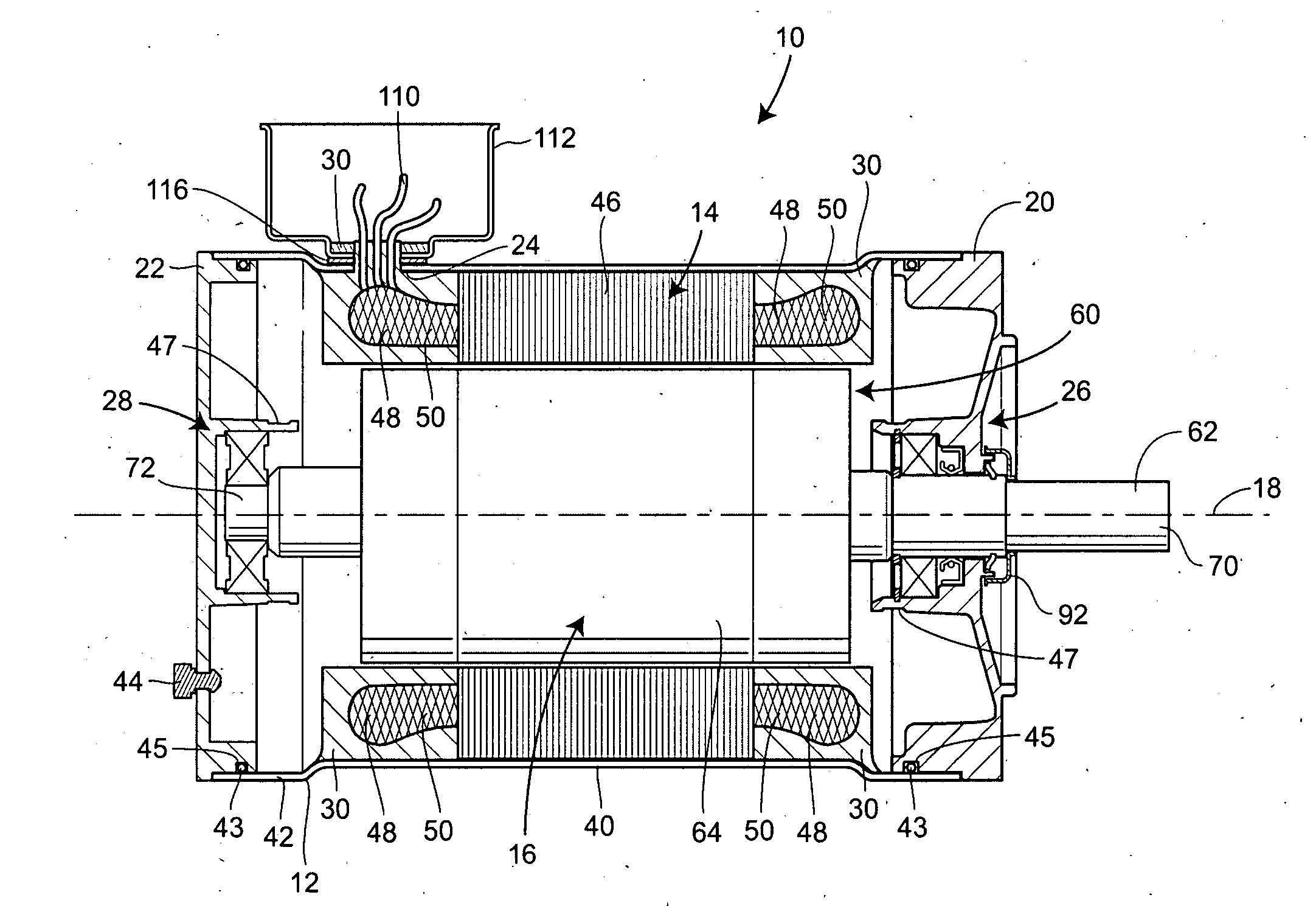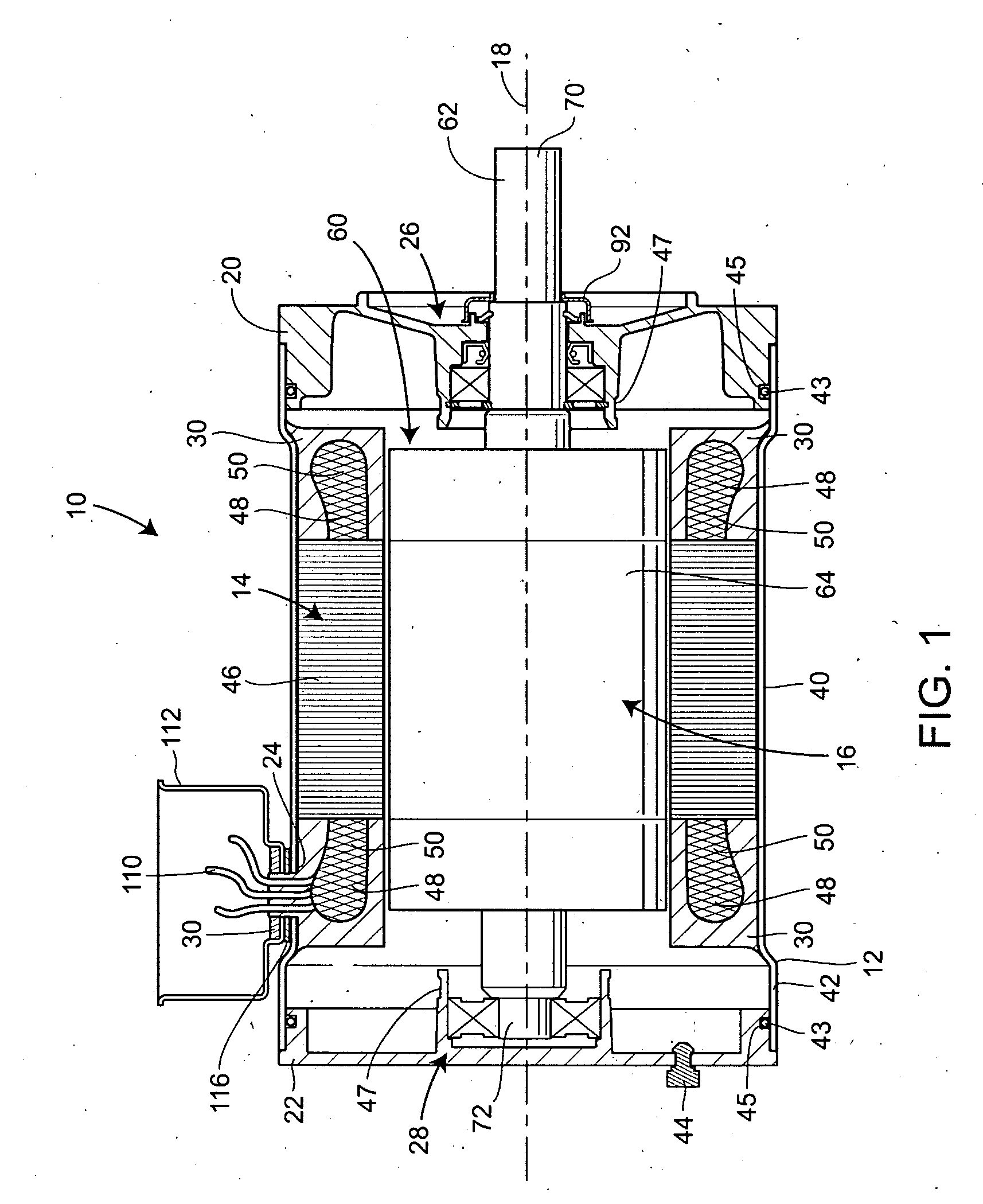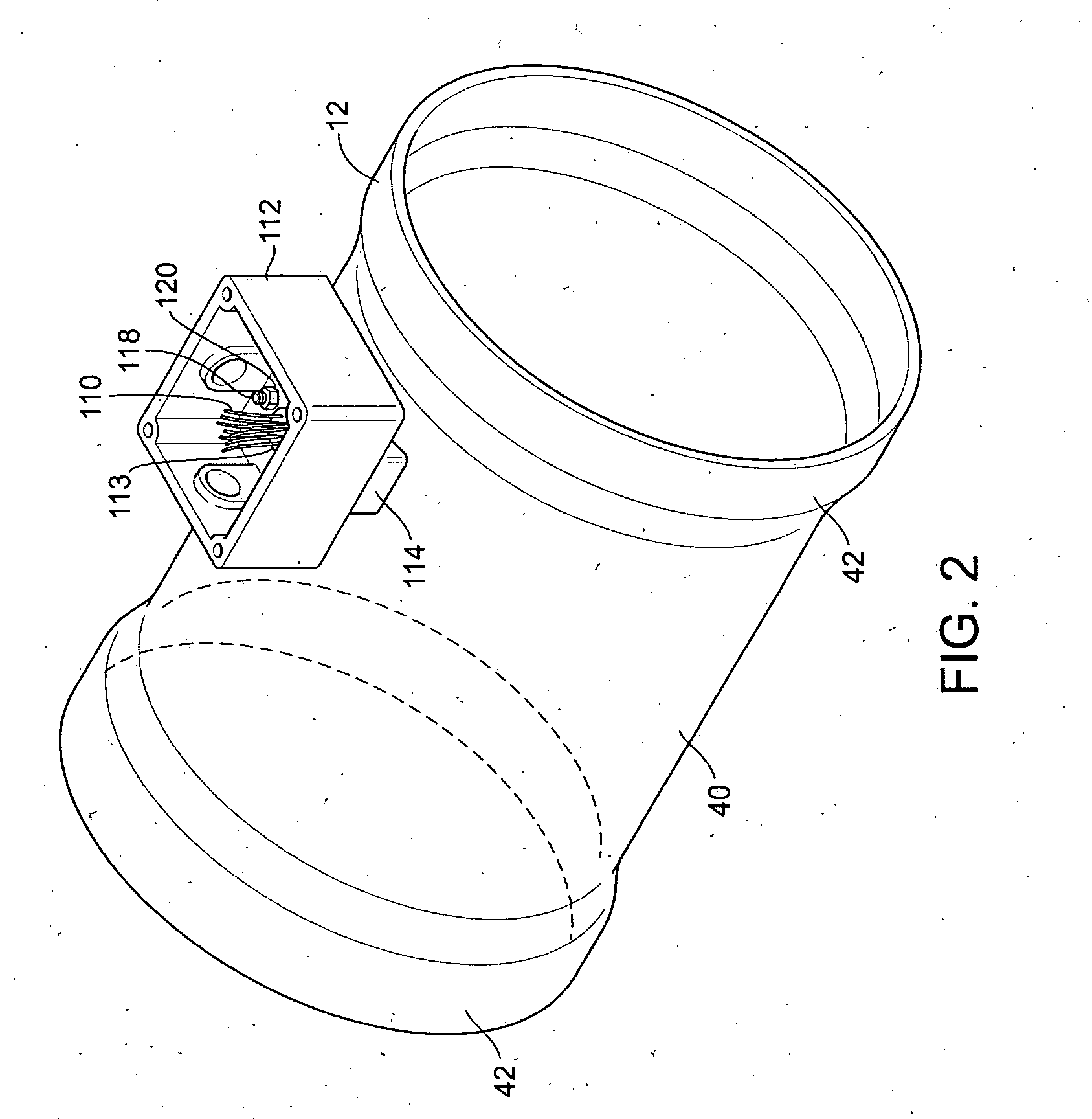Electric motors for washdown, food processing, and chemical applications
a technology of electric motors and washdown, applied in the direction of dynamo-electric machines, electrical equipment, supports/enclosements/casings, etc., can solve the problems of corrosive chemicals becoming dissolved in wastewater, harsh conditions for electric motors utilized in manufacturing processes, and increasing humidity in the facility being cleaned
- Summary
- Abstract
- Description
- Claims
- Application Information
AI Technical Summary
Benefits of technology
Problems solved by technology
Method used
Image
Examples
Embodiment Construction
[0025] Referring to FIG. 1, an electric motor 10 constructed in accordance with the teachings of the present disclosure is generally shown. The electric motor 10 includes the basic elements of conventional electric motors that are well known to those of ordinary skill in the art. These components typically include a generally cylindrical motor casing 12 having a central axis 18, a stator assembly 14, a rotor shaft assembly 16 disposed on the central axis 18, first and second end bells 20 and 22, respectively, attached to each end of the motor casing 12, and an electrical inlet 24 in the motor casing 12 for supplying power to the motor 10. The motor 10 further includes a first bearing assembly 26 housed in the first end bell 20 and a second bearing assembly 28 housed in the second end bell 22. Both bearing assemblies 26 and 28 support the rotor shaft assembly 16 when rotating about the central axis 18. The motor 10 also includes a heat-conductive solid resin 30 that substantially cov...
PUM
 Login to View More
Login to View More Abstract
Description
Claims
Application Information
 Login to View More
Login to View More - R&D
- Intellectual Property
- Life Sciences
- Materials
- Tech Scout
- Unparalleled Data Quality
- Higher Quality Content
- 60% Fewer Hallucinations
Browse by: Latest US Patents, China's latest patents, Technical Efficacy Thesaurus, Application Domain, Technology Topic, Popular Technical Reports.
© 2025 PatSnap. All rights reserved.Legal|Privacy policy|Modern Slavery Act Transparency Statement|Sitemap|About US| Contact US: help@patsnap.com



